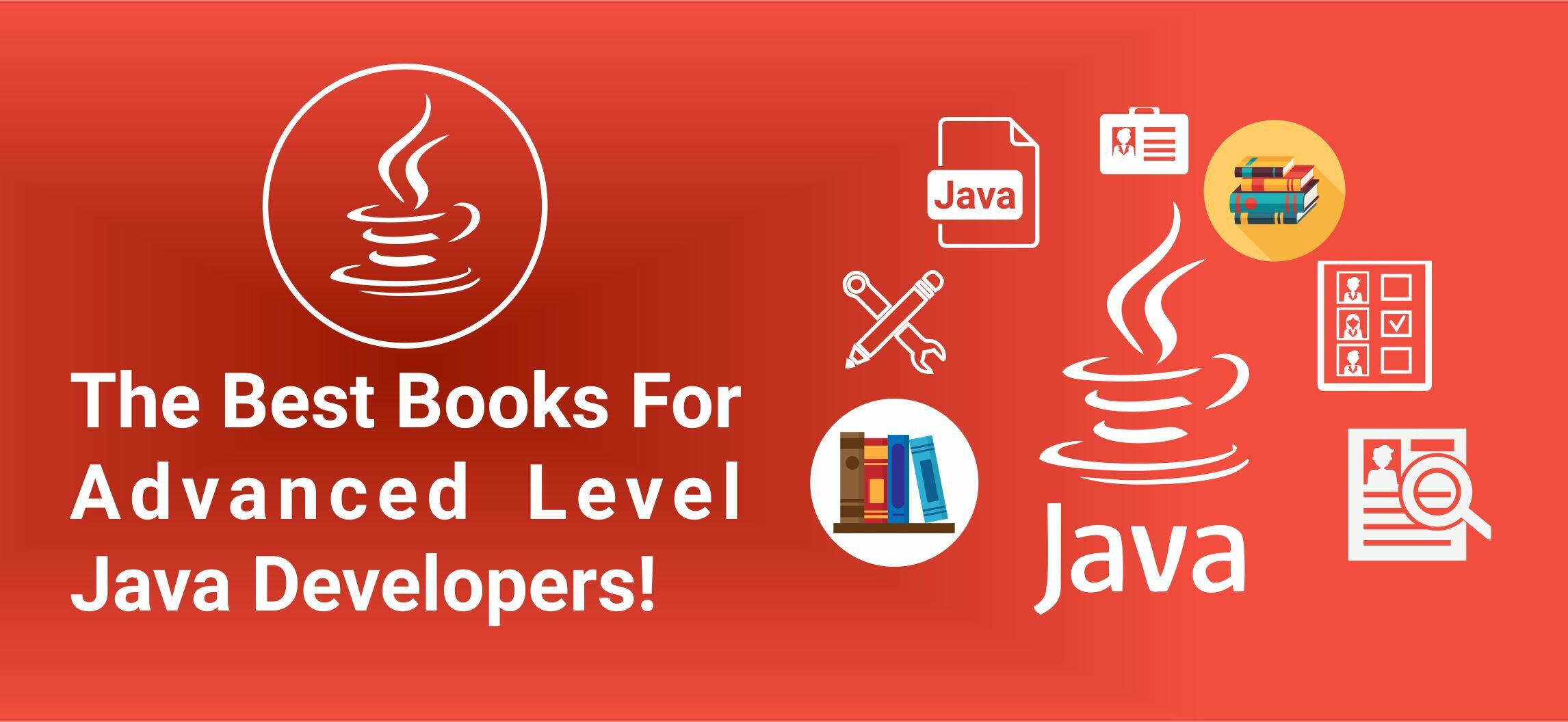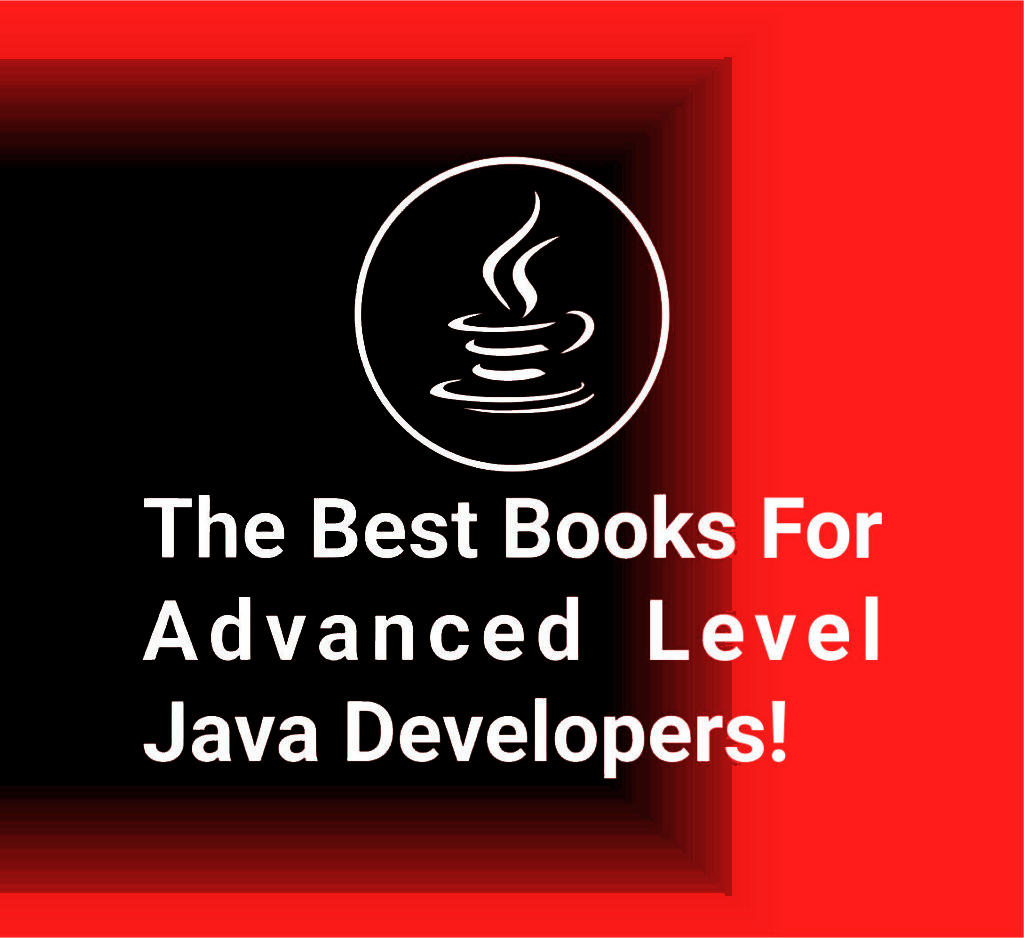Table of Contents
Toggle[vc_row][vc_column][vc_column_text]
Here Are a Few books Created For the Highly Experienced Java Developer!

Java is one of the most popular programming languages in the present day scenario. Several books are available in the market, mostly for beginners. But for those who have already been programming with java for a while, such books are redundant. Advanced Java books are not very readily available because they require more skilled, experienced, and deep thinkers to write. Post extensive research, we have come up with a list of best Java book for advanced programmers. These are books that can help only the Advanced Level Java Developers.
Let’s get on with it!

“Effective Java” by Joshua Bloch:
This book concentrates on a more profound understanding of java. It accumulates around seventy to eighty indispensable programmer’s rules of thumb: working, best-practice solutions for the programming challenges you come across every day.
This new edition of the Jolt Prize-winning work has been updated to cover Java SE 5 and Java SE 6 features. Bloch plays with modern design patterns and language idioms. It shows you how to make the most of functions ranging from generics to enums, annotations to autoboxing.
Each chapter consists of several items present as a short essay providing advice, insight into Java platform subtleties, and useful code examples. The comprehensive descriptions give readers a clear idea of what to do, what not to do, and why.
The highlights include:
-
Coverage of generics, enums, annotations, autoboxing, the for-each loop, varargs, concurrency utilities, etc.
-
Updated techniques on topics, including objects, classes, libraries, methods, and serialization.
-
How to avoid the loopholes of commonly misunderstood subtleties?
-
Focus on the language and its most major libraries: Java.lang, java.util, java.util.concurrent, and java.io.
Link To Buy: Effective Java

“The Elements of Java Style” by Scott Ambler, Allan Vermeulen, and a team of programmers from Rogue Wave Software:
This book is for anyone who writes Java code. Many books explain the syntax and primary use of java. But this essential guide explains not only what you can do with the language but also what you ought to do with it. This text comes with a set of rules for Java practitioners. While illustrating these rules with examples of correct and incorrect usage, the authors offer a collection of standards, conventions, and guidelines for writing robust Java code that is easy to understand, maintain and enhance. Java developers and programmers who will read this book will write better Java codes and become more productive for sure!
Link To Buy: The Elements of Java Style

“Java Concurrency in Practice” by Brian Goetz, Tim Peierls, Joshua Bloch, Joseph Bowbeer, David Holmes and Doug Lea:
Threads are an essential element of the Java Platform. As multicore processors have become a norm, concurrency effectively becomes necessary to build high-performance applications. Java SE 5 and 6 take us to step forward towards the development of concurrent applications, with improvements to the Java Virtual Machine. It supports high-performance, highly scalable concurrent classes, and a robust set of new concurrency building blocks. In this book, the creators of these new facilities do not explain how they work and how to use them. They also talk about the motivation and design patterns behind them.
Developing, testing and debugging multithreaded programs can be very difficult. It is easy to create concurrent programs that appear to work, but fail when it matters most: in production, under heavy load. This book gives readers both theoretical underpinnings and concrete techniques for building reliable, scalable, and maintainable concurrent applications.
The highlights include:
-
Basic concepts of concurrency and thread-safety.
-
Techniques for building and composing thread-safe classes.
-
Implementing concurrency building blocks in java .util.concurrent.
-
Performance optimization dos and don’ts.
-
Testing concurrent programs.
-
Topics including atomic variables, nonblocking algorithms, Java memory model, etc.
Link To Buy: Java Concurrency in Practice

“Programming Pearls” by Jon Bentley:
Bentley has substantially updated his essay to reflect current programming methods and environments. Also, there are three new essays on the following:
-
Testing, debugging, and timing.
-
Set representations.
-
String problems.
The author has rewritten all the original problems have and has generated an equal amount of new code. In the latest edition, what remains the same is Bentley’s focus on hardcore programming and his delivery of workable solutions to those problems.
Link To Buy: Programming Pearls

“Patterns of Enterprise Application Architecture” by Martin Fowler:
This book is a direct response to the stiff challenges that face enterprise application developers. The author noticed that despite changes in the technology from Smalltalk to COBRA to Java to .NET, the same basic design ideas could be adopted and applied to solve everyday problems. An expert group of contributors helps Martin come up with over forty recurring solutions into patterns. The result is a handbook of solutions that apply to any enterprise application platform.
This book is a summation of two books. The first section includes a short tutorial on developing enterprise applications, which you can read from the beginning to the end to understand the scope of the book’s lessons. The next section consists of a detailed reference to the patterns. Each pattern gives implementation information and also detailed code examples in Java or C#. The book contains rich illustrations with UML diagrams to explain the concepts further.
The highlights include:
-
Dividing an enterprise application into two layers.
-
The major approaches to organizing business logic.
-
An in-depth idea of mapping between objects and relational databases.
-
Using Model-View-Controller to arrange a web presentation.
-
Handling concurrency for data involving multiple transactions.
-
Designing distributed object interfaces.
Link To Buy: Patterns of Enterprise Application Architecture

“Refactoring: Improving the Design of Existing Code” by Martin Fowler:
As the application of object technology- particularly the Java programming language has become common, a new problem confronts the software development community. Less-experienced developers have created noticeable numbers of poorly designed programs, resulting in inefficient applications. Increasingly, software system professionals are discovering how difficult it is to work with these inherited, non-optimal applications. For several years, expert-level object programmers have been using a growing collection of techniques to improve the structural integrity and performance of such software programs. Known as “refactoring,” these practices have remained in the domain of experts. It is because no attempt has been made to transcribe the lore into a form that all developers could use until now! In this book, renowned object technology mentor Martin Fowler demystifies these master practices and shows how software practitioners can realize the benefits of this new process.
This book shows you where you can typically find opportunities for refactoring typically and how to rework a bad design to make it a good one. Each refactoring step is simple. casino en ligne le plus payant Refactoring may involve moving a field from one class to another, pulling some code out of a method to turn it into its process, or even pushing some system up or down a hierarchy. The cumulative effect of such small changes helps improve the design. Refactoring prevents software decay.
The author also provides a detailed catalog of over seventy proven refactorings with helpful pointers that tell you when to apply them; step-by-step instructions for using each refactoring; and an example illustrating how the refactoring works. The illustrative examples are in java, but the ideas apply to any object-oriented programming language.
Link To Buy: Refactoring: Improving the Design of Existing Code

“OSGi in Action: Creating Modular Applications in Java” by Richard Hall:
OSGi is a standardized technology allowing developers to create highly modular Java applications for enterprise development. OSGi will enable you to install, start, stop, update, or uninstall components without messing up your entire system.
OSGi in Action is a comprehensive guide to OSGi having two primary goals. First, it has a vivid introduction to OSGi concepts with examples that are relevant for architects and developers. It speaks about multiple practical scenarios and techniques, answering questions like how much of OSGi do you need. How do you embed OSGi inside other containers?
Link To Buy: OSGi in Action

“Clean Code: A Handbook of Agile Software Craftsmanship” by Robert C. Martin:
Martin has joined hands with his colleagues from Object Mentor to distill their best agile practices of cleaning code “on the fly” into a book. KIt instills the values of a software craftsman and guides to make you a better programmer. You will have to read codes, and you have to think about what is right and what is wrong with the system. You will have to reassess your professional values.
Clean code has three parts:
-
The first part offers explanations about the principles, patterns, and practices of writing clean code.
-
The second part includes multiple case studies of increasing complexity. Each case study deals with transforming a codebase that has some problems with one that is sound and efficient.
-
The third part has a single chapter with a list of heuristics and “smells” gathered while creating the case studies.
This book addresses the following questions:
-
How to differentiate between useful and harmful code?
-
How to write the right system and how to transform the wrong code into functional code?
-
How to create proper names, proper functions, utilitarian objects, and suitable classes?
-
How to format code for maximum readability?
-
How to implement complete error handling without disturbing code logic?
-
How to practice test-driven development and unit test codes?
Link To Buy: Clean Code
[/vc_column_text][/vc_column][/vc_row]






